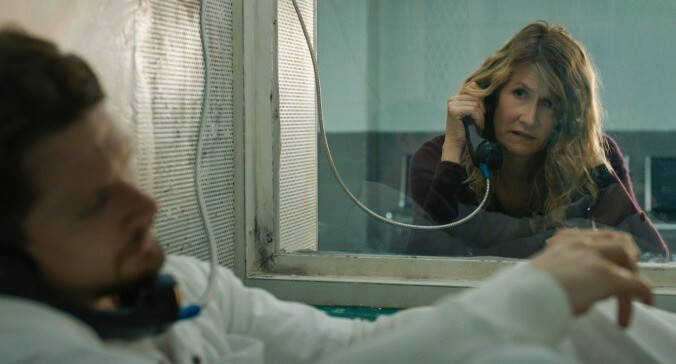Trial By Fire turns a compelling real-life tragedy into just another docudrama

Even if you don’t know anything about the Cameron Todd Willingham case, it’s easy to intuit within the first few minutes of Trial By Fire that you’re watching a movie about an innocent man who was wrongfully convicted. Everyone’s far too certain that he’s guilty: Arson investigators walk through the charred remains of Willingham’s house—which caught fire on December 23, 1991, killing all three of his young daughters—and speak to each other as if they were testifying against Willingham in a courtroom. Police detectives in the small Texas town where he lives all but lick their lips during an interrogation. The feeling of a rush to judgment is somehow palpable even as the film plods its way interminably through the basic details of the case, postponing the inevitable moment when some intrepid lawyer or other crusader will look into it, be appalled by the obvious miscarriage of justice, and start working on Willingham’s appeal.
That individual turns out to be a playwright named Elizabeth Gilbert (Laura Dern), who volunteers to correspond with death-row inmates and winds up becoming convinced that Willingham (Jack O’Connell) is telling the truth when he swears that he didn’t set the fire. Were Trial By Fire an actual drama—Dead Man Walking with an innocent prisoner, effectively—Gilbert would be its rightful protagonist. But the film was adapted from a 2009 New Yorker article about the case written by David Grann, and screenwriter Geoffrey Fletcher (Precious) largely emulates Grann’s journalistic structure. That means that Gilbert doesn’t show up for nearly an hour, leaving O’Connell to hold the screen by himself until then. And while Starred Up demonstrated how electrifying he can be in a prison movie, Willingham, as a character, can’t provide that sort of jolt. The whole point of Trial By Fire is that people jumped to a false conclusion about Willingham based on his appearance—mullet, tattoos, heavy-metal posters on his bedroom wall—and history of domestic violence, so the first half of Trial By Fire plays like The Shawshank Tedium, serving up various prison clichés to be undermined later. (The most shameless of these is a sadistic guard who gradually becomes Willingham’s best buddy.)
Once Gilbert finally enters the story, Dern and O’Connell get the opportunity to perform a handful of impressive glass-partition duets—again, not unlike the ones between Susan Sarandon and Sean Penn. (Willingham may be innocent of murder, but he still harbors deep-seated guilt over having failed to save his kids.) There’s also an entertaining scene in which Steppenwolf Theatre co-founder Jeff Perry (probably best known now as Cyrus Beene on Scandal) plays Dr. Gerald Hurst, the fire investigator who examined the case files shortly before Willingham was scheduled to be executed and determined that the original conclusion of arson was erroneous. But such bursts of energy are dispiritingly rare. More often, helmer Edward Zwick is content to hit whatever perfunctory beat the script calls for and move on. Certain aspects of the story, like Gilbert getting so caught up in Willingham’s case that she neglects her two teenagers, are addressed so superficially that it would have been more efficient just to show them being crossed off of a checklist.
Those who’ve read Grann’s article, or perhaps seen the 2011 documentary Incendiary: The Willingham Case, know that this tale doesn’t have a happy ending. Trial By Fire can’t change that, and it also has to acknowledge another random tragedy that makes what happens even sadder. (It’s the sort of improbable coincidence that’d make you roll your eyes, were it not taken directly from life.) But Zwick and Fletcher, in their eagerness to make an argument against the death penalty, needlessly stack the deck. It’s one thing to shift a witness’ recantation of his damning testimony from 2000 to 2004, in the interest of streamlining the narrative; it’s quite another not to mention that the witness subsequently recanted his recantation—however suspicious that might be—or to show someone deliberately burying the witness’ exculpatory statement in a drawer mere hours before Willingham is to be lethally injected. There’s enough reasonable doubt in this case without such distortion. Hell, there’s even a cameo of sorts by James Grigson, the forensic psychiatrist who helped convict Randall Dale Adams—though that just makes you wish that you were watching The Thin Blue Line, rather than this wan docudrama.